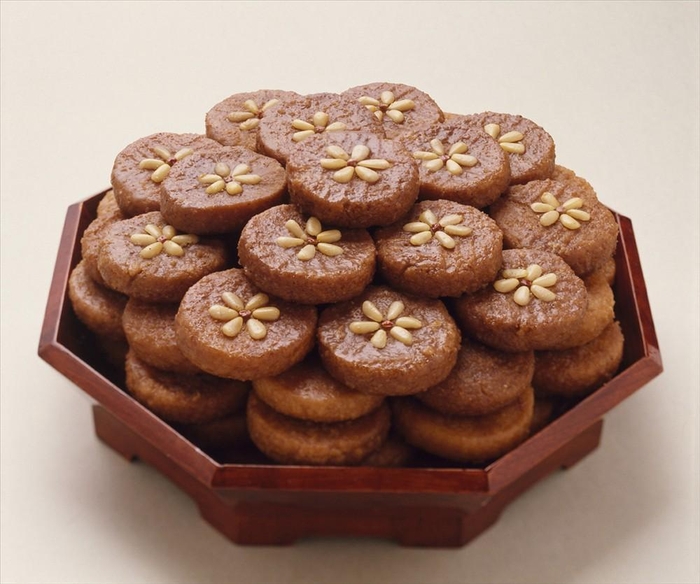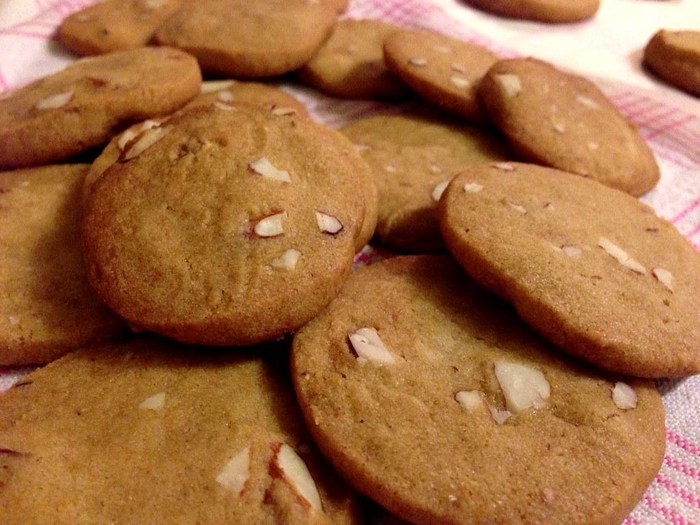Last Updated on November 8, 2022
Cookies are small cakes of sugar, fat and flour that have been cooked at high temperature until set. They can be soft and chewy, crisp and browned, or crumbly and flaky, sweetened, flavored, spiced, nutty, crispy, chewy, soft, crunchy, moist, dry, or sticky.
Cookies are one of the easiest desserts to cook when it comes to satisfy your sugar cravings. There are so many recipes that you can try for your cookies cause why not, everyone loves ’em.
But what to do when the texture of your cookies doesn’t turn out as you expected. What to do when they come out of the oven not as crispy and crunchy as you expected with a soft and chewy texture.
Here are some tips and tricks that will help you with your cookies in attaining the perfect crispy and crunchy texture instead of their soft and chewy texture.
Cookies tend to get softer if they sit around after baking. This happens because the moisture from baked goods evaporates quickly, leaving behind dry crumbs. To prevent this, store cooled cookies in resealable plastic bags or wrap individually in foil to preserve their crispness.

If your cookies have gotten mushy after sitting for several days, though, there is something else causing the problem. Moisture from the cookie dough can seep into the package from between the layers of wax paper, possibly allowing the cookies to absorb refrigerator odors.
You can address this by placing a sheet of parchment paper on top of the cookies before sealing the bag.
If your freshly baked cookies don’t contain the perfect crispy texture that means either you have used the wet ingredients a little too much or the temperature of your oven was not perfect for baking your goods.
Consider the recipe
The biggest problem lies within the recipe and the crispiness of the cookies is controlled by the ingredients to a large extent.

Here is what you can do to save your cookies from getting soft and chewy.
1) Use good quality flour. Flour is the base ingredient in almost every cookie recipe. It provides structure and texture, but it also affects the way your cookies turn out. Look for whole wheat pastry flour, unbleached white flour, or even cake flour.
Avoid using self-rising flour because it contains leavening agents that help give the dough lift during mixing. These leavening agents also contribute to the rising action in breads and pastries. You can try adding a little more flour to the recipe in order to get a firmer texture.
2) Make sure your butter is cold. Butter is the secret to tender, flaky cookies. But if you’ve ever tried to roll out a warm batch of dough, you know that it’s nearly impossible to achieve the same results as a cool dough.
To ensure that your butter is cold enough, wrap it tightly in plastic wrap and place it in the freezer for about 30 minutes. This process helps prevent any melting that could occur while you’re rolling out the dough.
3) Try using white sugar instead of brown sugar as brown sugar holds more moisture than that of white one which results in softer cookies.
You can always try adjusting the recipe to get the desired texture and taste.
Turn the temperature to lower
We turn our ovens down to 325 degrees Fahrenheit when baking cookies to prevent burning the outside while keeping the inside tender and moist. This trick works because the outer layer of a cookie doesn’t take long to bake. It takes about five minutes from the moment we put the batter into the oven until we pull the pan out and check the cookies.

But if we leave the oven door open slightly longer, the inside of the cookie gets baked more quickly and becomes crisper. So instead of waiting ten minutes for the whole batch of cookies to cool completely, we let the oven continue to bake for another two to three minutes, and voila! Crispier cookies every time.
Cookies have a tendency to get stale and lose their texture if stored improperly. A cookie that gets stale will not hold together well, making eating it difficult. It has been found that baked cookies and other sweets can last longer if stored properly.
This is because the moisture content of these items decreases after baking. Once the moisture content drops below 10%, the item tends to dry out and become hard and crumbly.
To prevent this from happening, let your cookies cool down before you transfer them to any kind of storage container. You can use an airtight container to store them or place the cookies into resealable plastic bags and refrigerate them. Cookies will retain their crispness for several weeks if stored properly.
If your cookies got soft due to the moisture attack you can use them to make pie crust instead of throwing them.
If they are too soft or almost soggy just put them in the oven for a few to evaporate the excess moisture and then put them in a food processor to crumble down with some butter to make the perfect pie crust.
How often do you eat cookies?
If you answered yes, then you should definitely try out these soft cookie recipes.
They are healthier and easier to digest.
Soft cookies are usually made from butter or shortening, sugar, flour, eggs, milk, and other ingredients.
These types of cookies tend to melt easily and are very sweet.
In contrast, hard cookies are made using baking powder, baking soda, salt, and other dry ingredients.
Hard cookies are crunchy and less sweet.
Hard cookies are better for you because they contain fewer calories and fat.
The main difference between them and soft cookies is that hard cookies don’t melt easily.
They also require longer cooking time, which makes them harder to bake
Why Are My Cookies Soft and Chewy?
Cookies are usually soft because of the sugar content. Sugar is what gives cookies their chewy texture. However, if you bake your cookies too long, the sugars in the cookie will caramelize and harden. This is why you see many recipes that say to bake cookies for 10 minutes. It’s not really about how long you bake them, but rather how long you let them cool after baking. Once the cookies have cooled down completely, store them in an airtight container.

Consider the Recipe
If you’re making a recipe from scratch, the ingredients listed in the recipe are generally correct. Sometimes, however, substitutions are necessary. For instance, if you’re using butter instead of margarine, you’ll need to reduce the amount of flour called for in the recipe. Similarly, if you’re using whole wheat flour instead of white flour, you’ll need to increase the amount of liquid called for in the recipe to compensate.
How to Harden Soft Cookies
Harden soft cookies by placing them in the freezer for about 15 minutes. This process will harden the cookie dough making it easier to roll into balls.
1. Adjust the Recipe
To ensure that the cookies turn out right, adjust the recipe to suit your needs. For instance, if you prefer softer cookies, reduce the baking powder and salt content. To get crispier cookies, add extra sugar. 2. Roll Out Cookie Dough Answer: After removing the cookie dough from the refrigerator, roll it out between two sheets of parchment paper until it’s 1/4 inch thick.
2. Pick the Right Baking Tray
Bake the cookies on a nonstick baking sheet lined with parchment paper. This prevents sticking and ensures even browning. 3. Bake the Cookies Place the baking tray in the oven and bake the cookies for 8 minutes. Remove the baking tray from the oven and let cool completely. 3. Store the Cookies Store the cooled cookies in airtight containers.
3. Set the Temperature Lower
To prevent the cookie dough from spreading too far during baking, set the oven temperature lower than usual. For instance, if you normally bake cookies at 350 degrees Fahrenheit 180 degrees Celsius, reduce the temperature to 325 degrees Fahrenheit 170 degrees Celsius. 4. Use a Nonstick Baking Sheet Use a nonstick baking sheet instead of waxed paper to line the baking sheets. This helps ensure that the cookies won’t stick to the pan.
4. Put the Cookies Back in the Oven
If you’re trying to avoid burning the bottoms of your cookies, put them back into the oven after removing them from the oven. This way, the bottoms won’t burn while cooling down. 5. Let Your Cookies Cool Before Storing Them Letting your cookies cool completely before storing them in airtight containers preserves their shape better.
How to Store Cookies So They Stay Crispy
Cookies are delicious treats that everyone loves. However, if you store them improperly, they could end up tasting stale or even go bad. Here’s how to store cookies properly so they stay crispy and delicious. 1. Keep Cookies Fresh To ensure that your cookies remain crisp and tasty, store them in airtight containers. It’s important to wrap each cookie individually because moisture can seep between layers of cookies.
How to Make Soft Leftover Cookies Crispy
If you’ve got leftover baked goods from last night’s dinner party, try these tips to get them back into shape. • Bake cookies in batches. This way, you’ll only have to bake one batch of cookies instead of two. • Freeze cookies in individual portions. Then, when you’re ready to eat them, simply pop them straight from the freezer into the oven.
Bonus: Leftover Cookie Pie Crust
To make cookie pie crust, combine 1 cup flour, ½ teaspoon salt, ¼ teaspoon baking soda, and 2 tablespoons shortening in a bowl. Cut in 3 tablespoons cold butter using a pastry blender or fork until mixture resembles coarse crumbs. Stir in 1 tablespoon ice water, 1 tablespoon milk, and enough additional flour to form a soft dough. Wrap in plastic wrap and refrigerate 30 minutes. Roll out dough between sheets of parchment paper to fit a 9-inch pie plate. Press dough evenly into bottom and sides of pie plate. Prick bottom and sides with a fork. Fill with desired filling. Cover edges with foil if necessary. Bake at 375 degrees F for 15 minutes. Remove foil and continue baking 10 to 20 minutes longer or until golden. Cool completely on a wire rack.
Cookies are usually baked at very low temperatures to prevent them from becoming hard. However, if you bake cookies at higher temperatures, they become harder. To make cookies softer again, simply put them back into the oven at a lower temperature.
Yes, but not all ovens are created equal. Many people think that if they bake something in the oven, it’s done. This isn’t always true. Ovens vary widely in terms of how hot they get, and even though many ovens are calibrated to 350 degrees Fahrenheit, that doesn’t mean that every cookie baked in that oven will turn out perfectly. It’s important to know what your oven does well and what it doesn’t. For instance, if you’re baking cookies, you’ll probably want to avoid using convection because it tends to dry out the dough. Also, if you’re baking a cake, you’ll want to avoid baking it longer than 30 minutes because it will dry out the batter.
Yes, but only if you bake them again. Cookies are baked at different temperatures depending on how soft they are. Soft cookies like sugar cookies are baked at lower temperatures while hard cookies like chocolate chip are baked at higher temperatures. If you bake cookies at a low enough temperature, they won’t get too soft. However, if you bake them at a high enough temperature, they will get too soft. To fix this problem, simply bake the cookies again at a slightly lower temperature.
Cookies are usually baked at very low temperatures 200°F and therefore they tend to get soft. To prevent this from happening, bake cookies at higher temperatures 300°F. This helps to dry out the dough and gives the cookie a firmer texture.
To harden cookies, place them in the freezer for about 30 minutes. This will help the cookie to set properly.
- How to Prolong the Life of Your Kitchen Appliances - December 22, 2024
- How Long does Yogurt Take to Freeze - May 5, 2023
- Top 10 best restaurants in Montana - May 1, 2023
